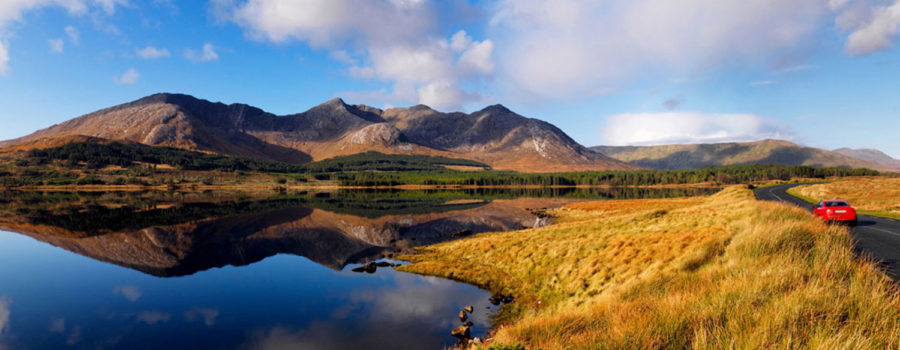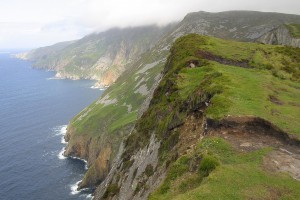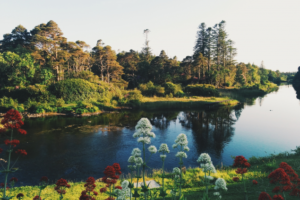If you have a camera — or even a dream where you’re accepting the award for Shot of the Year from National Geographic — the Emerald Isle is for you.
It’s the magic, the promise and the power of the landscape: it changes, shifts and transforms. Its rock faces are harsh, steep and unforgiving. Its flora and fauna are beautiful, diverse and can withstand the ever-changing temperamental climate.
And then there are its cities, brimming with people and rich history, teeming with life and merriment. The Irish people are a welcoming people; curious and friendly. For all these reasons — and the hundred more you’ll discover as you explore the island — Ireland presents an opportunity to be captured, completely uniquely, through your lens.
To help you plan a photographic journey of a lifetime, where you hop from the spectacular to the stunning, we’ve compiled our very favourite spots for photography in Ireland.
1) The Ring of Kerry
Get ready for 179 kilometres of beaches, lakes, islands, mountains, fields, medieval ruins and quaint Irish villages with fantastic coffee.
The Ring of Kerry is a journey in itself, taking you, as you can imagine, around County Kerry, placing you in wild and picturesque ruins like Ballycarberry Castle, dating back to 1398, Kerry Bog Village and Killarney National Park, to name a few.
We have a number of coach tours that take you along the Ring of Kerry but, another option is to drive the route instead, with our fully customized self-drive tours. That way, you’ll be in charge of stopping at incredibly quiet and wild places like Skelling Ring, Portmagee and Skellig Michael, a massive monastery on a terraced shelf 600-feet above sea level in the middle of the sea. Did we mention it dates back to the 6th century?

Skellig Michael, Ireland
2) Connemara
Oscar Wilde, an author known for his refined, metropolitan tastes, characterised Connemara as a place of savage beauty.
As a photographer looking to capture the quiet wilderness and vast, panoramic views of this ravishing landscape, there are plenty of mountains to scale and bridges to cross on your trip through Connemara. Here, wilderness abounds, and except for possible fellow photographers, there is nary a soul in sight. If you come in the spring or autumn, in particular, you’ll find the landscape awash with colour, peppered with bursts of purple and pink rhododendrons and rusty purple heather.
You’ll also want to plan your trip so you’re protecting your photography equipment from the elements — the most persistent of which are wind and rain.
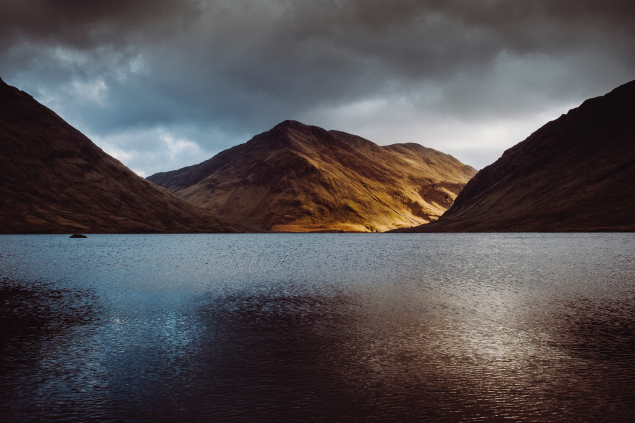
Connemara
In Connemara, plan to visit:
- Kylemore Abbey and Gardens — a monastery for Benedictine nuns who prized it as a ‘secret haven of peace and tranquility’
- Killary Harbour — take a tour around Ireland’s only fjord, located in the peacefulness of Northern Connemara
- Inishbofin Island — Take a ferry from Clean Harbour and head to this small island of 180 inhabitants, with incredible views, a castle and classic Irish fare and hospitality
- Ballynahinch Castle — Today, the castle, which was once the home of a former Indian prince, is now a hotel. You don’t have to stay here to be able to access what was once the largest estate in Britain and Europe, with Corrib river, Ma’am Valley and Twelve Bens mountains nearby. Stop by for lunch, or afternoon tea is also available.
- Roundstone — The Connemara landscape is wild nearly everywhere but if you’re looking to bring a different flair to your shot, don’t miss visiting the village of Roundstone, with its high-quality seafood restaurants and old-fashioned sailing regattas
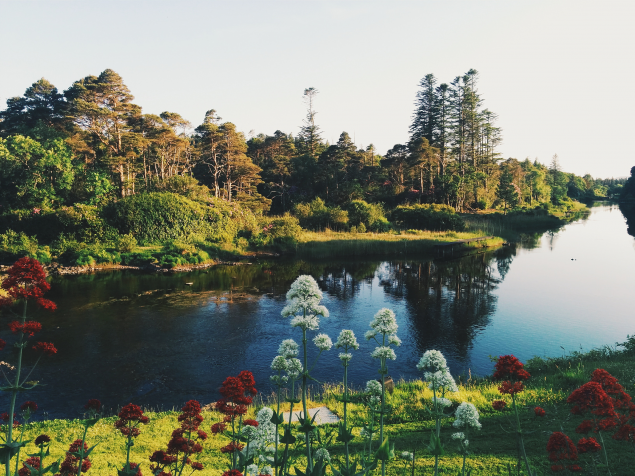
Ballynahinch Castle Grounds
3) Dublin
There’s so much to do and see in Dublin that you really need a week or more — especially if you’re planning to pull off a few ‘urbanscapes’.
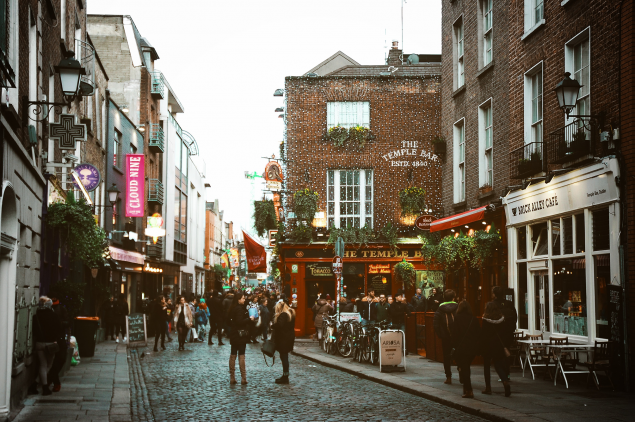
Temple Bar, Dublin
There are plenty of photographic opportunities awaiting you at famous landmarks and across the city centre, including:
- The Guinness Storehouse
- Christchurch Cathedral
- Grafton Street
- Ha’penny Bridge
- Capturing the Georgian Buildings in Fitzwilliam Square
If you’re more of a photographer who likes to roam and shoot what you see, begin from the cobbled streets of Temple Bar and make your way through the city.
Keep in mind that some spaces may have specific rules for photographers. If you’re in an establishment, make sure to ask for permission from proprietors as well as subjects. To capture the ambiance of many spaces without running into too many obstacles, you can choose to adjust depth of focus so that people in the background are present but blurred and an object stands in sharp focus instead.
4) Trinity College Library and the Book of Kells
There is so much to do and see in Dublin that we thought this called for its own spot on our list. It’s the famed Book of Kells exhibition; but first, you’ll have to take a trip through the quaint cobblestones of Trinity College to the Old Library building.
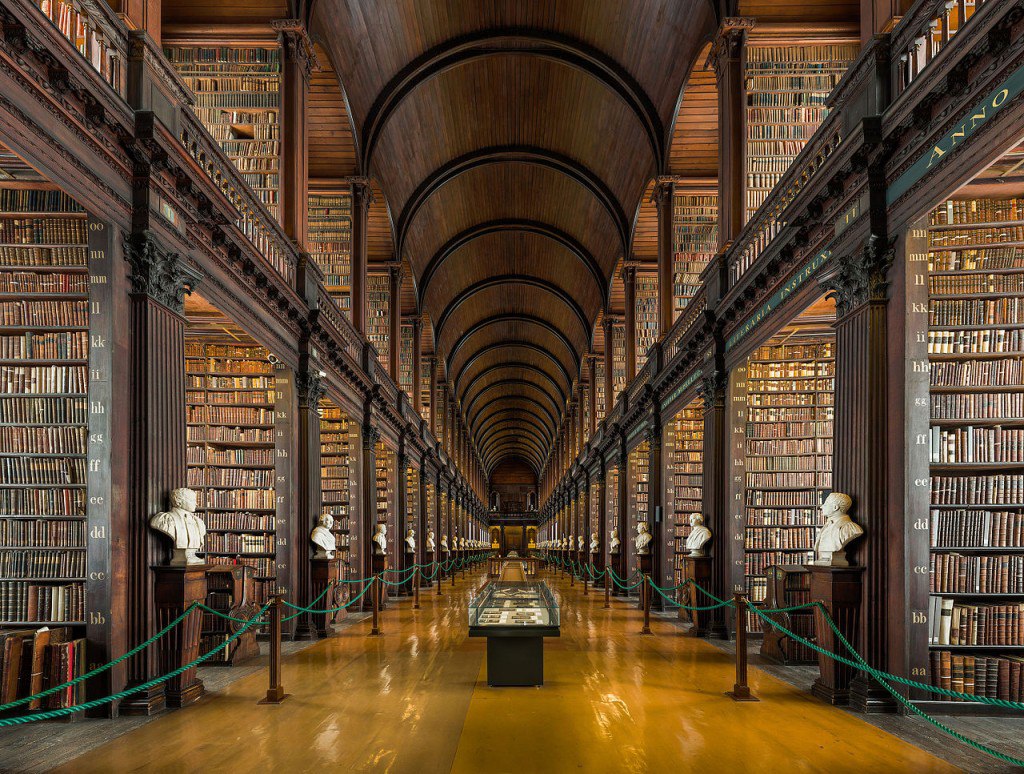
Trinity College Dublin
What’s so special about the Book of Kells? As Ireland’s ‘greatest cultural treasure’ and the world’s most famous medieval manuscript, this 9th-century book is a decorated copy of the four Gospels of the life of Jesus Christ.
The exhibition is open seven days a week. While no photography of the Book of Kells is allowed within the Old Library, photographers are welcome to capture other internal and external architecture of Trinity College.
5) Inis Mόr (an Island of the Aran Islands)
Inis Mόr is the largest island belonging to the Aran Islands. Besides the gorgeous and moody backdrops of beautiful cliffs and lush landscapes, Inis Mόr has plenty else to see and capture, along with the Visitor Centre, forts and famed ‘Na Seacht Teampall’ or the Seven Churches complex, an eerie set of remains, once quite a popular destination for Christian pilgrimages.
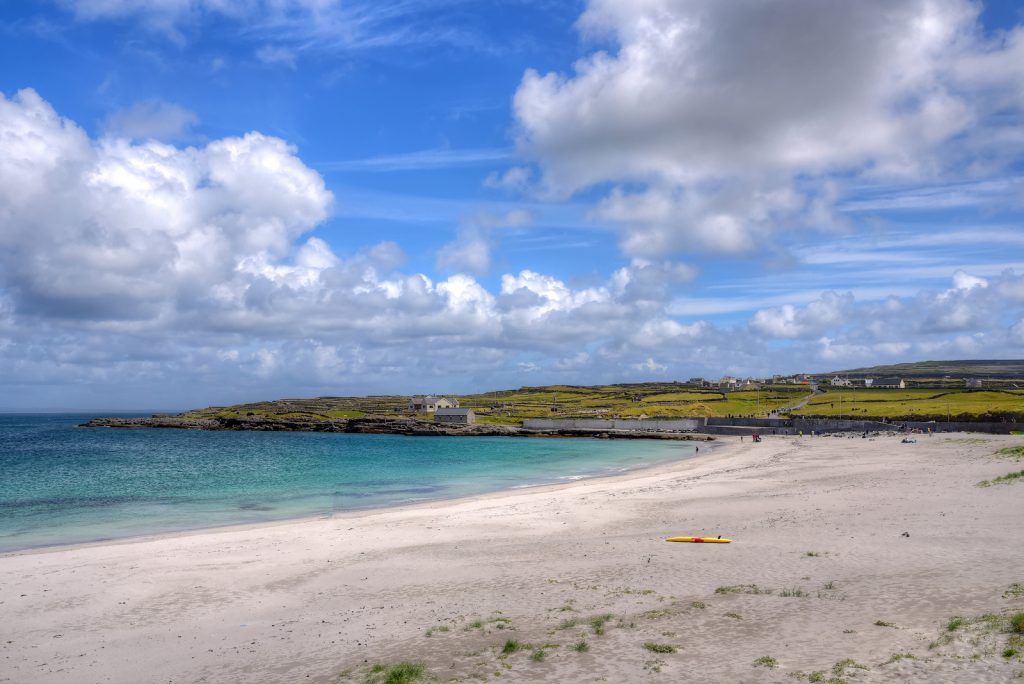
Inis Mór, the Aran Islands
If you’re looking to capture the beauty of Inis Mór in all its glory, you can stay overnight so you can capture a spectacular sunset and sunrise. Otherwise, a one-day trip from morning to dusk, should suffice.
6) Dún Aonghasa, Aran Islands
Another place deserving of its own spot on the list is Dύn Aonghasa on Inis Mór. While its name sounds like something out of Tolkien lore, its location will instantly put you in mind of the ‘Iron Islands’ of the popular TV show, Game of Thrones with its the harsh yet majestic shards of sea-facing cliffs and rock faces.
Dύn Aonghasa is a semi-circular stone fort with a head-on view of the choppy Atlantic Ocean, located 300 feet on the south cliff-side of Inis Mόr. You can cycle to the location from the pier. Once you arrive, there are quite a few steps to the site, but the 14-acre site gives you plenty of room and clearance to set up a tripod and capture a panoramic view of the cliffs and ocean.

Dún Aonghasa Cliffs, Aran Islands
While many of these beautiful landscapes are open to the public and easily accessible without a fee, Dύn Aonghasa is a landmark fort and, as such, is protected by the Office of Public Works. Tickets for adults cost €2.00, €1.00 for students, €1.25 for seniors. Families can bundle their tickets for €5.50 and there are guided tours available, free of charge, on request.
7) Giant’s Causeway, Northern Ireland
These incredible, interlocking basalt columns sprouted from a volcanic fissure eruption 60 million years ago and cooled into tall, prism-like structures.

Giant’s Causeway, Northern Ireland
8) Sunbeam Shipwreck, County Kerry
The Sunbeam shipwreck is what remains of the 19th-century schooner that ran aground on a Kerry beach in 1903. Its skeletal remains are open to all photographers looking to capture her eerie rise from the sure.
A great shot to capture is when the tide comes in. This is the point in time where waves wash over the partially submerged wreck and, coupled with the waves, makes the ship look like a ghostly spectacle rising from the depths.
9) Fanad Head Lighthouse, County Donegal
One of the best views from and of County Donegal is from Fanad Head Lighthouse. Part of Donegal’s ‘Wild Atlantic Way’, Fanad Head Lighthouse offer travelers a trip to the past.
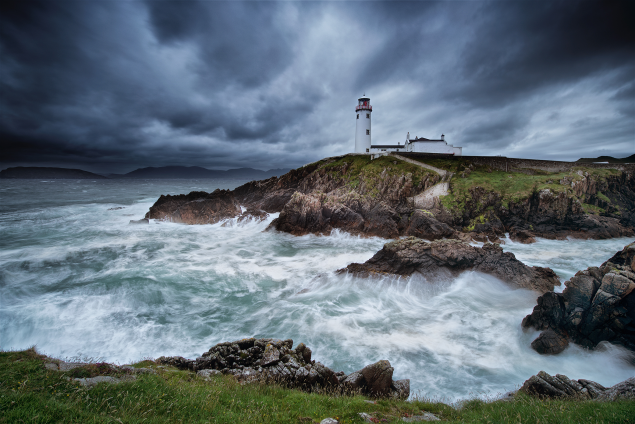
Fanad Head Lighthouse
Admission fees to the lighthouse are very reasonable: for families, for example, expect to pay €22. Opening hours vary through the year and it’s best that you check these before heading up.
Once you’ve taken a tour of the interiors, why not head a distance away and set up a spot for your camera? Because of the choppy waves that come in from time to time, you might consider using time-lapse photography or keeping the shutter open for a long period of time when capturing this beauty.
10) Slieve League Cliffs, Donegal
Weirdly, the Slieve League Cliffs are less known and less popular than the iconic Cliffs of Moher. Yet, these are Ireland’s highest cliffs, standing at a sheer drop of 1,972 feet, offering sweeping views of the surrounding cliffs & the sea.
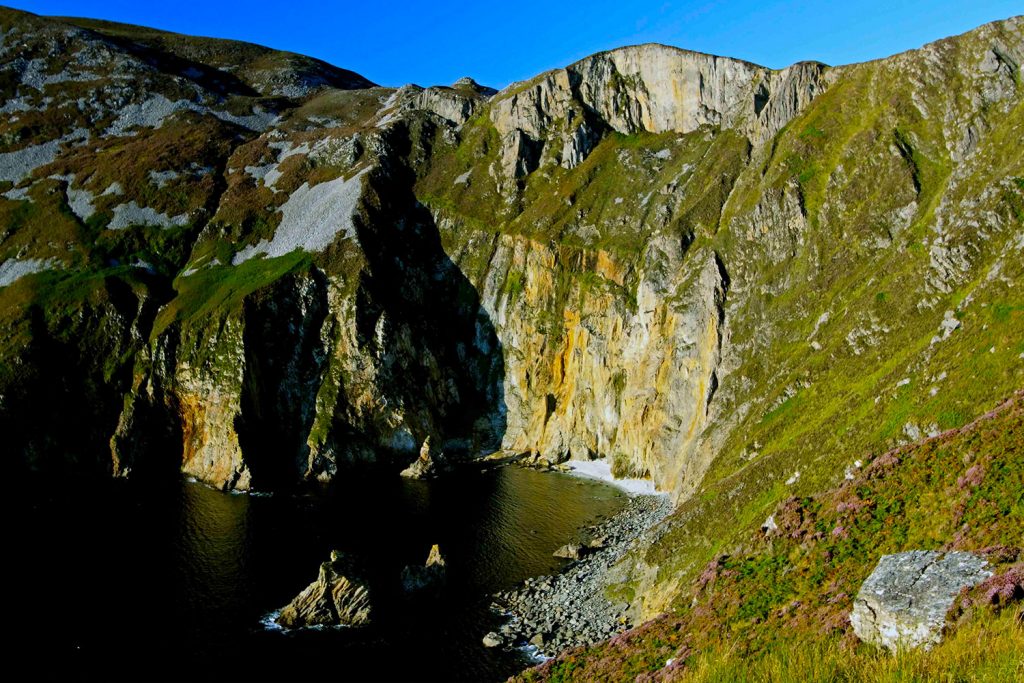
Slieve League Cliffs
This is good news for you because it means that you’re likely to be surrounded by complete silence, as you view the rugged coastline, take in the magnificent scenery and set up for the perfect shot. A great way to photograph the full effect of Slieve League is to set your base at a viewpoint known as Bun Glas.
If you are a hiking enthusiast, get your boots on and walk the Pilgrim’s Path to take in the cliffs, where for the more experienced you can continue on One Man’s Pass along the cliffs.
11) Skellig Rocks
The treasure that was made even more famous by the recent Star Wars movies, the Skellig Rocks are islands that rise like tall, imposing towers from the sea. Known as ‘Great Skellig’ and ‘Little Skellig’ these towering crags are accessible only by boat.

Skellig Rocks, County Kerry
Tours can circle both islands where you will need your camera at the ready to view any of the 23,000 pairs of gannet nests and other fantastic marine birds like razorbills and puffins in their own habitat.
Another will allow you to get off at Skellig Michael but calls for a healthy amount of physical fitness so that you don’t injure yourself.
12) Gap of Dunloe, County Kerry
You might feel like a character straight out of Middle Earth when you head to the Gap of Dunloe. The pass is located between the MacGillycuddy’s Reeks mountains and Killarney’s Purple Mountain. The Gap runs 11 kilometres long and goes from Kate Kearney’s Cottage down to Lord Brandon’s Cottage.
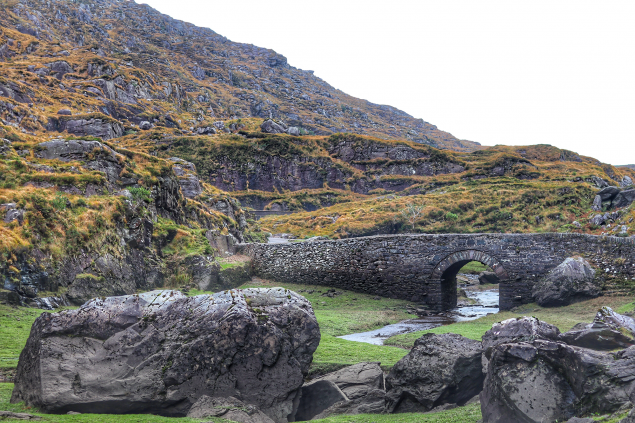
Gap of Dunloe
Within the gap are five lakes, each more stunning than the last: Coosaun Lough, Black Lake, Cushnavally Lake, Auger Lake, and Black Lough. The first two lakes have an old arch bridge called the ‘Wishing Bridge’ between them.
You can definitely drive the route, but it could be useful, especially if you’re planning to photograph these incredible landscapes, to cycle.
13) Valentia Island
Its name is just as beautiful as its locale. As one of Ireland’s most westerly points, Valentia Island is a geological wonder that has taken almost 350 million years to form. There is plenty to do on Valentia, including diving, fishing, kayaking, sailing and birdwatching.
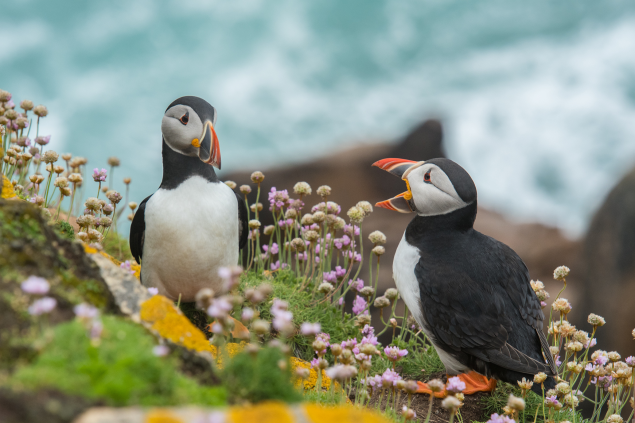
Puffin birds on Valentia Island
Valentia Island is also a particularly good spot to access Skellig boat tour operators from. This means that you can combine bird and wildlife photography along with shots of the Skellig Rocks, all in one trip.
Don’t be fooled — it was ridiculously hard to pick just 13 of these gorgeous spots in Ireland. For photographers, there can be no better photo ‘opps’ than those you’ll land in Ireland. Just make sure you’ve always got your camera in tow because there’s just no telling when the perfect shot will make itself known.
Feel free to contact us if you are looking to plan a photography tour of Ireland. Our fully customizable private and self-drive tours will look after your accommodation and dining needs whilst allowing you pick the scenery you’d like to capture the most.


